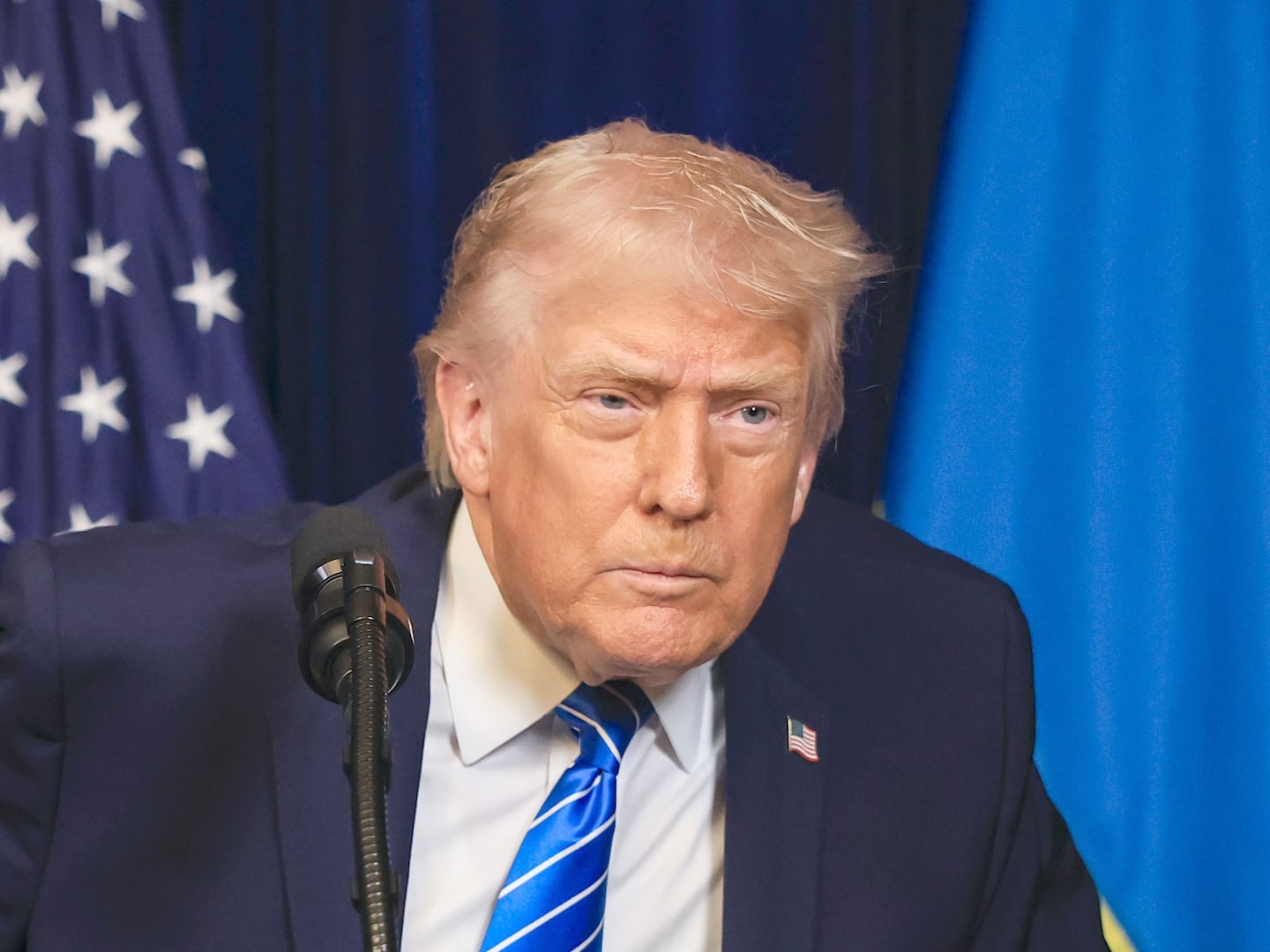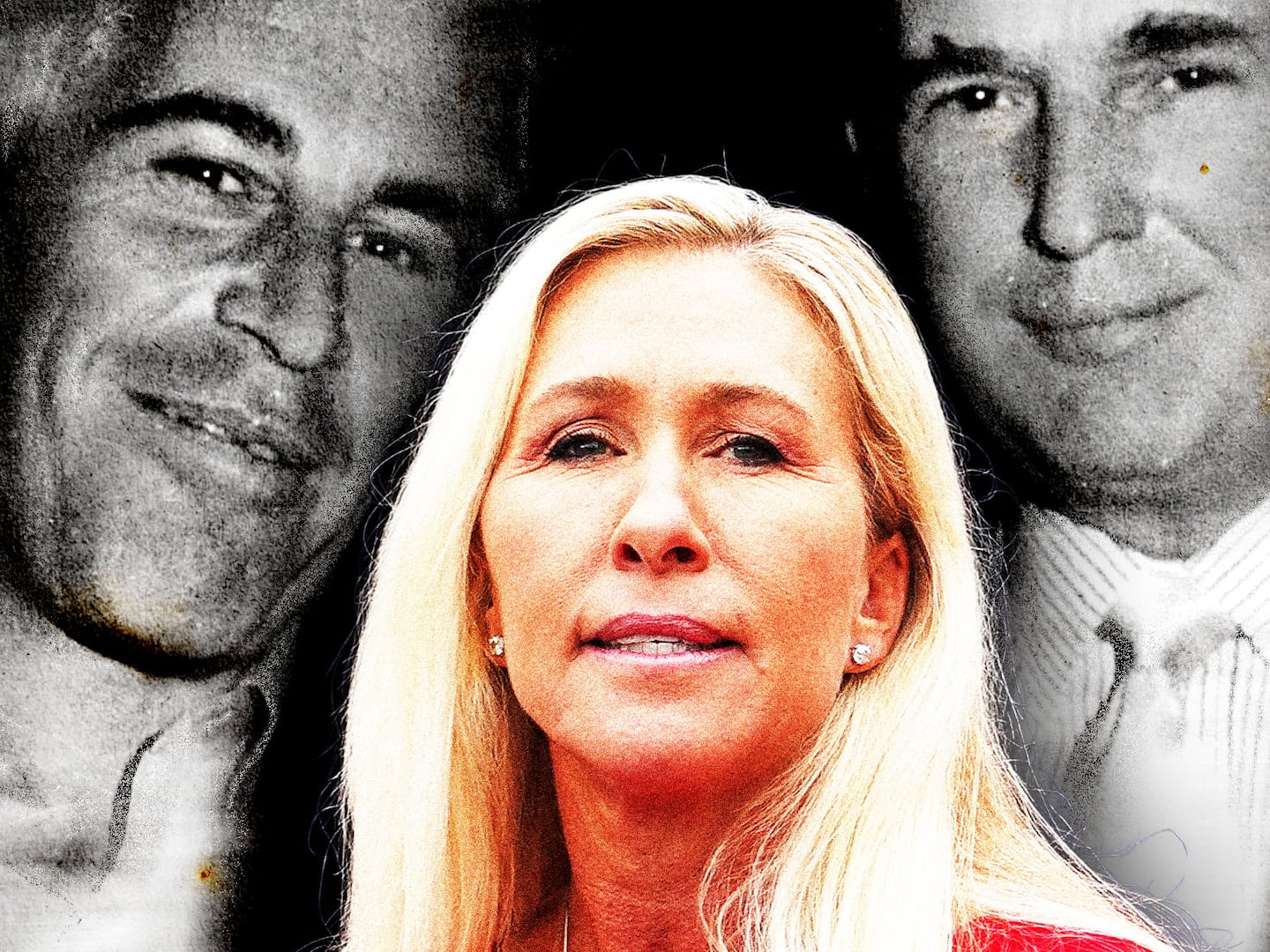Harry Potter mastermind J.K. Rowling’s first Wizarding World spinoff, Fantastic Beasts and Where to Find Them, tells the story of bashful magizoologist Newt Scamander’s first trip to New York amid rising anti-wizard sentiment. The troubling rise of Gellert Grindelwald, a Hitler-esque Dark Wizard with a key role in Potter history, lurks in the backdrop of Scamander’s tale through briefly-glimpsed headlines, flashbacks, and the Deathly Hallows insignia. Both threads stay only tangentially connected until a late, Scooby-Doo-worthy plot twist and cameo that, befuddling or not, define much of what’s to come in Rowling’s latest franchise.
(To avoid spoiling said plot twist, turn away now or else conjure up an Obliviate spell.)
A climactic wand battle between Scamander (Eddie Redmayne), a rogue Auror named Percival Graves (Colin Farrell), and the good witches and wizards of MACUSA (the United States’s magical Congress) ends with Graves unmasked as proto-Voldemort himself, Grindelwald, here played by a bleach-blonde Johnny Depp with what appears to be one contact missing. Depp’s purring, hammy villain (a stark contrast from Farrell’s menacing Graves) lasts only a few seconds on camera before he’s carted off to wizard prison and we get back to the real star of the movie, Newt’s pet Niffler.
Of course, Grindelwald’s prison stint will inevitably last about as long as his first cameo, poising him to take on a primary role in the next of four (four) planned sequels to Fantastic Beasts. This being a Rowling joint, like Cursed Child earlier this year, we can be sure what’s to come won’t wander too far from established Potter lore. There will be echoes of familiar dynamics and a revisiting of key events from Wizarding history—most tantalizingly the battle for the Elder Wand between Dumbledore and his old pal Grindelwald. But what else to expect?
Rowling has gone on record saying the franchise will span 19 years, dating the last film at 1945—the year young Tom Riddle graduates from Hogwarts, likely with one or two Horcruxes already in tow. That’s also the year of Grindelwald’s defeat in that pivotal, three hour-long duel which ended the global wizarding war. (When Fantastic Beasts begins in 1926, Dumbledore and Grindelwald—whose former best friendship revolved around their hunt for the three Deathly Hallows and the means to seize power, abolish the law requiring wizards to live in secret, and position magical folk as the master race over Muggles—have already fallen out after the killing of Dumbledore’s sister Ariana.)
While Grindelwald rose to power and raised an army, pleas in the Wizarding community for Dumbledore, Grindelwald’s only equal in magical prowess, to subdue him grew louder. As he later recounts the story to Harry, Dumbledore resisted the call for years out of guilt over his sister’s death (he refused to face the possibility that it had been his own spell that killed her in the three-way fight between himself, his brother, and Grindelwald). But Rowling’s penchant for revisionist history has since added an extra dimension to Dumbledore’s motivations in these dark interim years: in 2007, she declared that Dumbledore was gay and had in fact fallen in love with Grindelwald in his youth.
Much like the manipulative relationship we see between Grindelwald-as-Graves and the tortured young wizard Credence Barebone (Ezra Miller) in Fantastic Beasts, Grindelwald’s treatment of Dumbledore was similarly abusive and one-sided. “I think he was a user and a narcissist,” Rowling explained of the pair’s relationship in 2010, “and I think someone like that would use it, would use the infatuation. I don’t think he would reciprocate in that way, although he would be as dazzled by Dumbledore as Dumbledore was by him, because he would see in Dumbledore, ‘My God, I never knew there was someone as brilliant as me, as talented as me, as powerful as me. Together, we are unstoppable!’ So I think he would take anything from Dumbledore to have him on his side.”
The real test of Rowling’s commitment to the inclusion of such a high-profile LGBT character will come in the Fantastic Beast sequels ahead. (While we’re at it, maybe throw in more than one named, speaking character of color this time! Go wild!) She and director David Yates have been coy on the subject so far. But even apart from his doomed romance, Dumbledore’s dark, conflicted, fascinating history offers fertile storytelling ground to mine in the sequels ahead—particularly with regards to his sister, Ariana.
The story of Dumbledore’s sister, Ariana, takes on a newly tragic dimension with Fantastic Beasts’ introduction of the Obscurus, the black seething mass of rage and destruction birthed when young witches or wizards represses their own magic. Ariana famously went mad after being attacked as a young girl by three Muggles who witnessed her practicing magic. “It destroyed her, what they did,” says Albus Dumbledore’s younger brother Aberforth in the seventh Harry Potter book. “She was never right again. She wouldn’t use magic, but she couldn’t get rid of it; it turned inward and drove her mad, it exploded out of her when she couldn’t control it, and at times she was strange and dangerous.”

This is essentially the dictionary definition of an Obscurial, a witch or wizard who carries an Obscurus. (An uncontrolled explosion of Ariana’s magic claimed her mother Kendra’s life, much like Credence’s loss of control killed his abusive stepmother in Fantastic Beasts.) Ariana was around when Grindelwald first met the Dumbledore family in Godric’s Hollow in the years prior to 1926. If she was indeed an Obscurus, as fan site The Leaky Cauldron points out, she was probably the first Grindelwald ever laid eyes on, likely sparking his obsession with the idea of using Obscurials’ power for his own gain. In the sequels ahead, we’ll likely hear the details of this story for ourselves.
Anyway, along with Depp’s Grindelwald, Scamander’s bewitching ex-crush Leta Lestrange (Zoë Kravitz) is glimpsed in a “cameo” of sorts, via a photograph found in Newt’s suitcase. Lestrange, of course, is the infamous surname of one of the Wizarding World’s oldest purebred families; Bellatrix, the fanatical Death Eater who murdered Harry’s uncle Sirius and bore Voldemort’s secret love child—yep—is its most notorious member. In the Fantastic Beasts scene, Queenie, a witch proficient in Legilimency (mind-reading), looks into Scamander’s mind and pieces together the gist of their relationship: The pair attended Hogwarts together over a decade ago and bonded over their passion for studying magical creatures. An experiment engineered by Leta went horribly awry and nearly killed another student, at which point she faced expulsion. Newt, ever heroic, took the blame in her place and was forced to leave school over Dumbledore’s objections.
Interestingly, parallels to Dumbledore and Grindelwald seemingly emerge with Queenie’s next line, in which she describes Leta as “a taker” in her relationship with Newt. The expulsion-by-school-experiment thread also seemingly echoes Grindelwald’s backstory. As outlined in the seventh Harry Potter book, young Gellert was expelled at 16 from the Scandinavian school for magic, Durmstrang Institute, because of “the twisted experiments” he conducted there (though, as with Leta’s, the exact nature of those experiments goes unmentioned).
Leta turning out to be a Dark Arts sympathizer—which would certainly explain why she and Scamander are no longer close—feels likely. Or perhaps their relationship will mirror Lily Potter and Severus Snape’s, two childhood buddies whose friendship ended over one’s willingness to screw with the Dark Arts. Either way, her expanded role in the next few films will open a window into the Lestrange family before Bellatrix. (Bellatrix married into the family; little is known about members other than herself and her “loyal” husband Rodolphus, who helped torture Neville Longbottom’s parents into insanity.)
In any case, the retelling of Grindelwald’s rise and fall from Nazi-fascistic power comes at a time of renewed political relevance; Fantastic Beasts’ metaphor for the evils of repression and homophobia also take on pronounced weight, considering who’s moving into office here in the States. While each new sequel will transport us to a different city in the Wizarding World, the heart of Rowling’s stories about tolerance and inclusion promise to reverberate now and for years to come.
And there’ll be Nifflers, of course. That alone is worth the price of five Wizarding tales.






